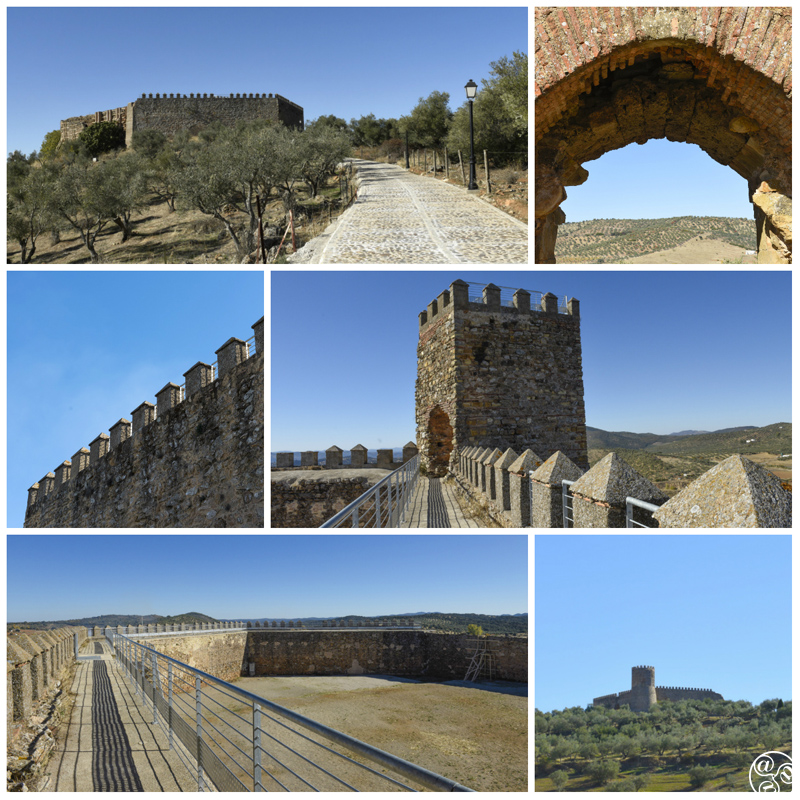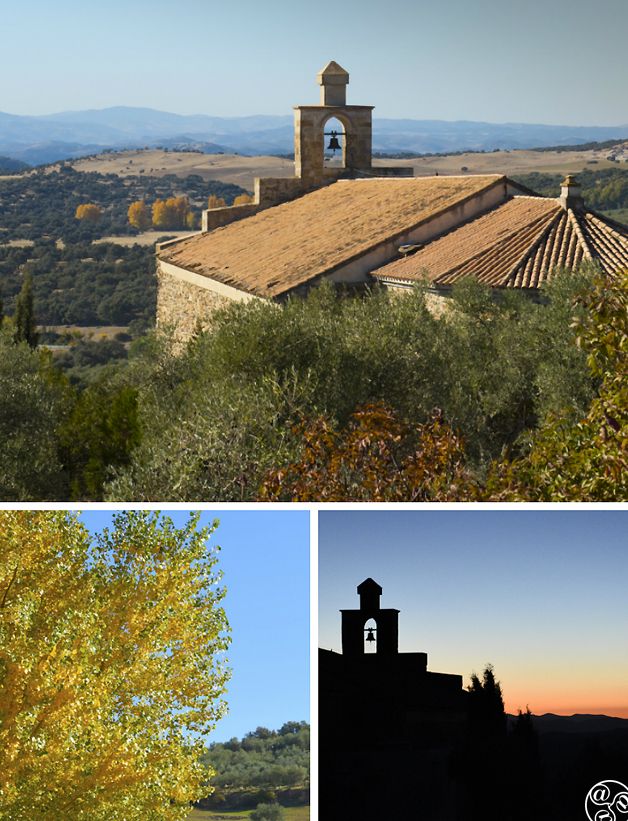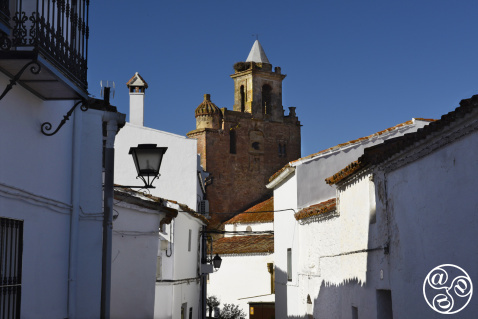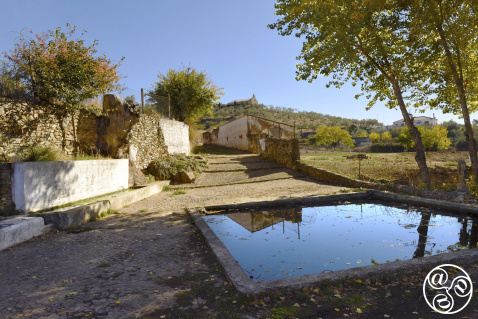
View from the Castle to the village of Alanis, which sits at the foot of the Sierra Norte mountain range. |
|
ALANÍS DE LA SIERRA
by Saskia Mier
Alanís is set within the Comarca Sierra Norte of the Seville province, north of Cazalla de la Sierra. Only several kilometres from the border of Andalusia to Extremadura, it has about 1850 inhabitants.
HISTORY
The village's origins go back to Celtic times; it was later called Iporci during the Roman era, as confirmed by remains found in the area, and then Ordo Iporcensium.
During the Moorish period, the settlement was known as Al-Haniz, meaning fertile or prosperous land. The castle was built around this time. In 1249 the village was re-conquered from the Moors by Fernando III, a year after the city of Seville was taken by the Christian king.
Two hundred years later, to solve his financial problems Alfonso XI sold various possessions from the Order of Santiago to Cardinal Albornoz, along with three villages: Zafra, Torre de Villanueva and Alanís. When Pedro I succeeded Alfonso XI in 1350, after protests from the local councils, the monarch ordered that the three villages be returned to their former owners.
In 1472, the Duque de Medina Sidonia conquered the fortress from the Marquis of Cadiz. In 1808, the castle was rebuilt by the French during Napoleon`s occupation of Spain, but subsequently destroyed. Some mansions of Alanís clearly show the village's long heritage, especially those of Mudejar style from the 15th century, and Renaissance from the early 17th century.
Hotels
Book hotels in Alanis
THINGS TO SEE
Castillo
The castle is of Arab origin, and reconstructed in 1392. It was attacked by the French during the Napoleonic occupation, who dynamited one of its six walls (southwest), which today can be seen in its ruins. It is an irregular hexagonal plan, there is a single entrance gate facing the village. Located overlooking the village The castle has been restored in 2016 and modern constructions inside the castle removed. The stairs and 6m walls now have a handrail and visitors can climb to the top of the single tower.
The castle is free to visit and open during daylight hour. Park the car, and walk up the cobbled path to the castle gates.
Ermita de San Juan
The chapel was built next to the castle. Architectural features suggesting a construction of the first half of the fourteenth century, although Gothic inscription of the knight Cristóbal de Mosquera suggests he was the founder in the fifteenth century.
In the nineteenth century it fell into ruins and was restored in 1907. It was home to sculptures of San Juan Bautista, San Juan Evangelista, San Antonio Abad, Santa Ana, Santa Brígida and a sculpture of the Crucified Christ found in 1906. In 1936 all these sculptures disappeared. Located next to the castle at the end off Calle San Juan Bautista.
Fuente de Santa María
Built during the reign of Carlos V, the spring has been a water supply for centuries. A frontage was erected in honour of the Virgen de las Angustias, with a Sevillian ceramic panel with the image and date of 1767. Located on Calle Angustia.
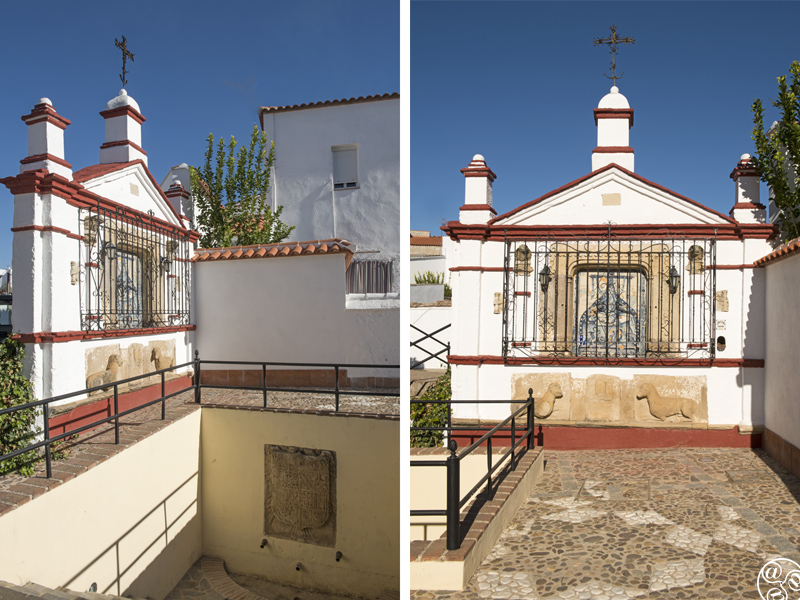
Iglesia de Nuestra Señora de las Nieves
Church built in 1356 with a valuable baroque altarpiece, which adorns the entire front of the main altar, dating from the 16th century. After the Lisbon earthquake, it underwent major repairs in the mid 18th century. Located on Calle Barrionuevo.
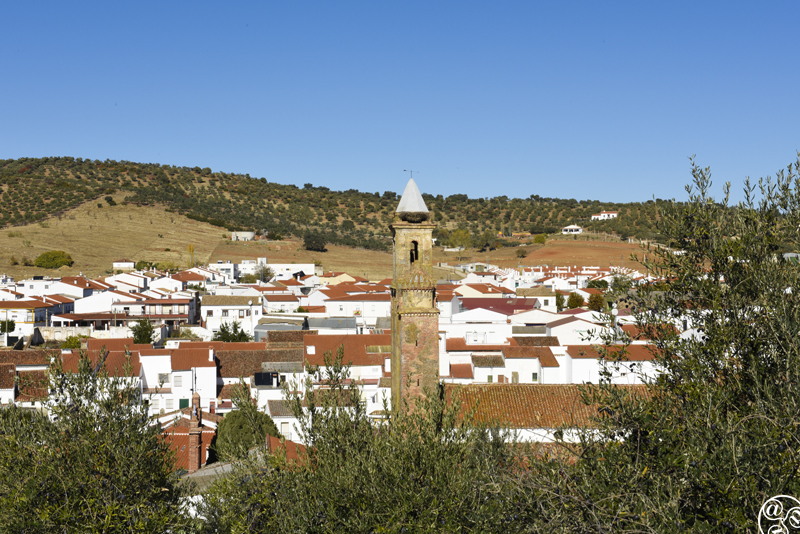
Fuente de Pilitas
An Arab brick fountain. It was inspiration for the local legend called "El Encanto de las Pilitas" accompanied by its corresponding pool of the same origin and style, which still continues watering the nearby orchards and water trough. In front of the fountain, laid into the cobbled street is a large watering pool. The overflow from the pool irrigates the adjacent fields. Located on the road to the cemetery, on the left bank.
Ermita de Jesús Nazareno
The chapel belonged to the old charity hospital, now disappeared, and built in the 16th century. Located on Calle Jesus.
THINGS TO SEE OUTSIDE THE VILLAGE
Ermita de Nuestra Señora de las Angustias
The Gothic chapel was built in to celebrate the defeat of the Moors in battle, in the valley of Matamoros. Its construction consists of three sections, the first built in the 18thcentury, with a tombstone inscribed with the date 1656. The first image of Nuestra Señora de las Angustias, patroness of the village, was destroyed during the Civil War but later replaced by the present work of the sculptor, Castillo Lastrucci. Located on Calle Angustias, 500m from the village.
Ermita de San Miguel de la Breña
The chapel is the last vestige of the former Basilica Monastery that once existed here. Located a few kilometres from the village, on the road to Malcocinado, on a privately-owned estate.
COUNTRYSIDE WALKS
Alanís offers several walking routes. The shortest routes are Los Carros, 7km long and lasting 2 hours, and Cerro del Cura, 4.7km long and taking up to an hour. There is also a section of the Camino de Santiago that can be walked, called Camino de la Frontera at 262km.
GASTRONOMY
Typical dishes to try in Alanís include those made with venison and lamb, as well as gazpacho and puchero (meat stew). Tortas de manteca (suet pastries) are eaten with aniseed or cherry liqueur from Cazalla de la Sierra. Homemade sweet treats are also worth a try.
HANDICRAFTS
Handicrafts made in Alanís include basket-making, ceramics, saddler and tapestry.
FESTIVALS
Carnaval
Celebrated in Febuary.
Romería
Pilgrimage celebrated the last weekend of May.
Feria de Agosto
Summer fair celebrated in August.
Jornadas Medievales
Medieval festival celebrated beginning of September.
Verbena de la Patrona
Celebrated in September.
NEARBY VILLAGES TO DISCOVER
The nearest villages to Alanis are Guadalcanal, San Nicolas del Puerto, and Cazalla de la Siierra.

